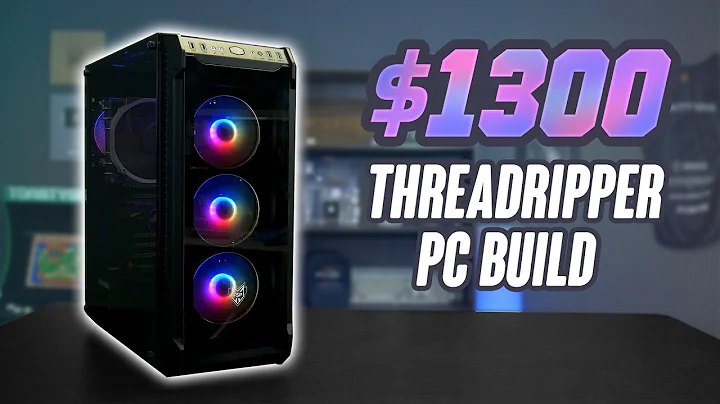Troubleshooting Installation Issues with Interlock CPUs and Graphics Cards
Table of Contents
- Introduction
- Common Issues during Installation
- Blank Screen after Installing Drivers
- Remote Control Software Warning
- Errors in Event Logs
- BIOS Settings and Virtualization Extensions
- Resizable Bar and Disk Configuration
- Multi-Monitor Setup Issues
- Conclusion
Introduction
In this article, we will discuss some common issues that users may encounter when installing an interlock CPU and graphics card. These issues can lead to a blank screen, errors in event logs, and complications with virtualization. We will also explore potential solutions and workarounds for these problems.
Common Issues during Installation
Blank Screen after Installing Drivers
One of the issues that users may face when installing a graphics card is a blank screen. This problem occurs when drivers beyond the standard Windows drivers are installed. As soon as the installation begins, the screen goes blank, making it impossible to proceed. This issue can be particularly frustrating for users who are not aware of its existence.
Remote Control Software Warning
If you have enabled remote desktop support or are using remote control software, you may encounter a warning sign next to the graphics adapter. This warning indicates that the graphics adapter has been disabled. While you may be able to install the card, it won't function properly. Checking the device's properties and events logs will reveal a series of errors related to this issue.
Errors in Event Logs
Examining the events logs for the device will provide more insight into the installation problems. These logs may contain errors such as issues with migrating PCI devices. It is essential to review these logs to identify the root causes of the installation failures and troubleshoot the issues effectively.
BIOS Settings and Virtualization Extensions
To address some of the installation issues, it is crucial to adjust the BIOS settings. Specifically, the virtualization extensions, known as SVM, need to be enabled or disabled based on the requirements of the system. Furthermore, certain BIOS settings like CSM and device control should be configured appropriately for optimal performance. Failure to adjust these settings can result in hardware errors and compatibility problems.
Resizable Bar and Disk Configuration
For users aiming to maximize GPU usage, enabling resizable bar is essential. However, it is important to note that this feature requires the disk to be set as GPT and the compatibility support module (CSM) to be disabled. Converting disks to GPT can be done through specific methods depending on the version of Windows being used. It is crucial to follow the correct procedures to ensure the smooth functioning of resizable bar.
Multi-Monitor Setup Issues
Users with a multi-monitor setup may encounter a peculiar issue during startup. The left-HAND screen becomes the primary screen during boot, causing inconvenience. Additionally, the left-hand screen may remain off even after logging in. To resolve this problem, manually unplugging and reconnecting the monitor cable may be necessary. Certain display drivers or hardware bugs may contribute to this issue, necessitating the use of alternative cables or converters for stable connections.
Conclusion
Installing an interlock CPU and graphics card can Present various challenges and issues. From blank screens to event log errors, these obstacles can hinder the installation process. Additionally, problems related to BIOS settings, disk configuration, and multi-monitor setups can further complicate the experience. However, by following the steps and solutions discussed in this article, users can navigate through these difficulties and successfully install their hardware.
Highlights
- Discover common installation issues with interlock CPUs and graphics cards
- Address the problem of blank screens after installing drivers
- Understand the warnings associated with remote control software
- Analyze errors in event logs and troubleshoot accordingly
- Adjust BIOS settings for optimal performance and compatibility
- Enable resizable bar and configure disks appropriately
- Solve multi-monitor setup issues during startup and post-login
FAQ
Q: What should I do if I encounter a blank screen after installing the drivers?
A: If you experience a blank screen, make sure you have installed the correct drivers and that they are compatible with your system. If the issue persists, try booting into safe mode and uninstalling the drivers.
Q: Can I enable virtualization extensions on my Intel Arc graphics card?
A: No, Intel Arc CPUs do not support virtualization extensions. If virtualization is essential for your needs, it is recommended to choose a graphics card from a different brand.
Q: Why does my multi-monitor setup have issues during startup?
A: Some multi-monitor setups may experience issues where the primary screen is incorrect during boot. This can be resolved by manually unplugging and reconnecting the monitor cables or using alternative cables or converters.
Q: How can I enable resizable bar for optimal GPU usage?
A: To enable resizable bar, ensure that your disk is set as GPT and the compatibility support module (CSM) is disabled in the BIOS settings. You may need to convert your disk to GPT using specific methods depending on your version of Windows.
Q: Is there a workaround for the display driver or hardware bugs causing issues with multi-monitor setups?
A: If you are experiencing issues with display driver or hardware bugs, try using alternative monitor cables or converters for stable connections. It is also recommended to check for any available driver updates or patches from the manufacturer.
Resources
 WHY YOU SHOULD CHOOSE TOOLIFY
WHY YOU SHOULD CHOOSE TOOLIFY
































